Puppy potty training is a crucial aspect of bringing a new furry family member into your home, but it doesn’t have to be overwhelming. By harnessing the power of a crate as a tool in your training arsenal, you can streamline the process and set your puppy up for success. In this comprehensive guide, we’ll delve into the benefits of crate training for potty training, offer practical tips for implementation, and provide a step-by-step approach to efficiently teaching your puppy proper bathroom habits.
Introduction to Puppy Potty Training
House training is more than just a crucial step in integrating a new puppy into your home; it’s the foundation of a harmonious living environment. Potty training ensures a clean living space and, more importantly, establishes a bond of understanding and trust between the owner and the pet. This bond is vital for a healthy relationship, as it sets the tone for future interactions and training sessions.
Although adult dogs can be cate trained, it’s best to start potty training early. Beginning potty training at a young age leverages a puppy’s innate ability for quick learning. This early intervention ensures that good habits are instilled right from the start, significantly reducing the chances of future accidents. It also makes the potty training process smoother and more predictable for both the puppy and the owner.
However, the journey isn’t always straightforward. The role of consistency, patience, and positive reinforcement cannot be overstated. Maintaining a consistent routine helps the puppy understand and anticipate its schedule, eliminating confusion. But, as with all training, patience is the key.
There will be inevitable accidents along the way, and it’s essential to approach them with understanding rather than frustration. Lastly, positive reinforcement, be it in the form of praise or treats, acts as a catalyst. It encourages the puppy to repeat desired behaviors, making the training process not only more effective but also enjoyable for pet parents and the little one.
It’s essential for pet owners to set realistic expectations. While most dogs might grasp the nuances of house training quickly, others might take their sweet time. Recognizing that each puppy is unique and that setbacks are a part of the learning curve can make the training journey more compassionate and ultimately successful.
Read more about Dog Training 101
The Basics of Puppy Potty Training

Puppy Potty Training Crate
Every puppy owner knows that understanding their pet’s behavior is the first step to successful house training. Let’s delve deeper into the essentials of this process.
How Long Does it Take to Potty Train a Puppy?
Potty training using a crate is a popular and effective method, but the time it takes to crate a train can vary widely based on several factors. On average, most puppies can be crate trained for potty purposes within 4 to 8 weeks.
However, factors such as the puppy’s age, breed, temperament, and previous experiences play a significant role. Younger puppies, who start early may adapt faster because that’s the routine they know. Consistency, patience, and positive reinforcement are crucial throughout the process.
It’s essential to remember that every puppy is unique. While some might grasp the concept within a few weeks, others might take months. The key is to stay consistent, celebrate small victories, and adjust techniques based on the puppy’s progress and needs.
The Ideal Age for Crate Training Your Puppy
The optimal age to commence potty training for a puppy is between 12 weeks and 16 weeks old, but puppies can reasonably start as early as 8 weeks. At this juncture, puppies have developed sufficient bladder control, making them more receptive to training. Initiating the process before this age can be counterproductive, as puppies have limited bladder control, which can lead to frequent accidents and potential frustration for the owner.
However, if a puppy is older than 12 weeks when brought home and has been accustomed to eliminating in a confined space, the potty training process might necessitate a longer duration and additional patience. It’s crucial to differentiate between age-related learning curves and habits formed due to previous living conditions. For a comprehensive guide on this topic, refer to WebMD’s article on house training puppies.
Understanding Puppy Behavior
Puppies, by their very nature, have certain instincts and behaviors that can be both an advantage and a challenge when it comes to potty training.
- Natural Instincts of Puppies: One of the most significant advantages is their preference for a clean sleeping area. This instinct means they’ll naturally want to eliminate away from their resting place, making it easier to guide them to the right spot.
- Age Considerations: Just like human babies, younger puppies have smaller bladders. This means they require more frequent outings. As they grow, their bladder control improves, but it’s essential to be patient and understand their limitations at each stage.
- Signals and Signs: Recognizing the signs early can prevent many accidents. Puppies often exhibit specific behaviors when they need to go, such as sniffing, circling, or showing restlessness. Being attuned to these signals can make the training process smoother.
Choosing the Right Training Method
There are several methods to choose from, each with its own set of advantages and challenges.
- Crate Training: This method leverages the puppy’s natural dislike for soiling their sleeping area. The crate acts as their den, and they’ll typically avoid eliminating inside it. Crate training not only aids in potty training but can also be beneficial for addressing separation anxiety.
- Paper Training/Pee Pad: For those who live in high-rise buildings or can’t frequently take their puppies outside, paper training can be a lifesaver. This involves training the puppy to eliminate newspapers or highly absorbent puppy pads or pee pads placed in a designated area inside the home.
- Indoor Potty Training: Some owners, especially those with smaller breeds, opt for permanent indoor solutions like grass pads or litter boxes. These can be especially useful during inclement weather or for nighttime needs.
Essential Potty Training Supplies
Being well-equipped can make the training process more efficient and less stressful for both the owner and the puppy.
- Crates: Choosing an appropriately sized crate is paramount. It should allow the puppy to stand, turn, and lie down comfortably. A crate that’s too large might give them space to eliminate in one corner and sleep in another. Ensure your crate can adjust as your puppy grows.
- Cleaning Supplies: Accidents are bound to happen. It’s essential to clean them up effectively to prevent the puppy from returning to the same spot. Enzyme cleaners are especially effective as they break down the odors that might attract the puppy.
Understanding the basics of puppy behavior, choosing the right training method, and being equipped with the necessary supplies are the pillars of effective potty training. With patience and consistency, every puppy can be successfully house trained.
Implementing the Training
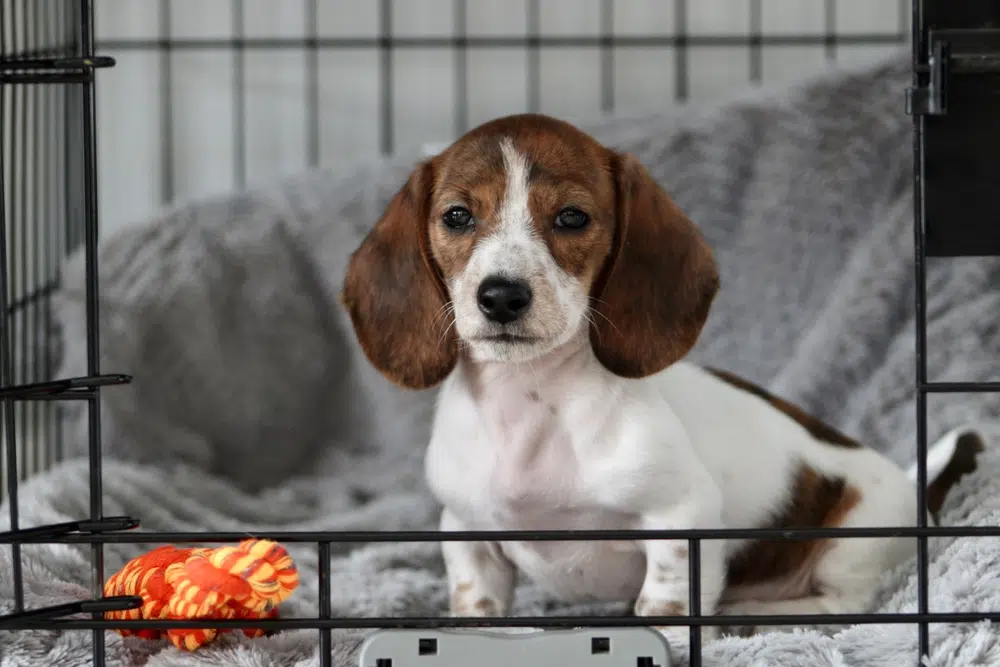
Puppy Potty Training Crate
Setting a Routine
Crafting a structured routine is pivotal for house training success. Puppies, akin to toddlers, flourish when there’s predictability in their day. Here’s a breakdown of establishing an effective routine:
- Importance of Regularity: Consistency is paramount. A routine helps diminish anxiety and confusion, ensuring the puppy can anticipate what’s next.
- Feeding Schedule: By setting consistent feeding times, you can better gauge the puppy’s elimination habits. Knowing when they eat allows you to predict their potty needs accurately.
- Outing Frequency:
- For young puppies: Every 30 minutes to an hour.
- As they grow: Extend the intervals gradually.
- Key Times to Go Out:
- Upon waking.
- After a play session.
- Post meals.
- Night-time Routines: Some puppies might require a midnight potty break. Having a set routine for this can train them to hold longer overnight.Read More about Creating a Crate Training Schedule
Time for Potty!
With a consistent schedule and a crate ready, you’re well-prepared to train your dog to embark on the potty training journey. Naturally, the core of this regimen is ensuring your dog goes potty outdoors.
Here’s a breakdown of the potty process:
-
The Initial Step: The first time you bring your pup home, guide them to a designated potty area outdoors. This helps in associating this specific spot with the act of relieving themselves.
-
Leash Up: Initially, it’s advisable to have your puppy on a leash. Given their curious nature, puppies can easily get sidetracked, perhaps choosing to frolic in the grass rather than attending to their business. The leash ensures they remain on task. This holds true even if you have a fenced backyard.
Without guidance, if your pup freely relieves themselves, it becomes challenging to reward them immediately after they’ve done their business, making the behavior reinforcement less effective. Plus, it can lead to a cluttered yard.
-
Timeframe: Allocate 10-15 minutes for them to explore and hopefully, do their business. Limit distractions and chatter to ensure they concentrate on the task. If they don’t relieve themselves, guide them back inside and let them stay in their crate.
-
Introduce a Cue: Choose a specific word or phrase like “go potty” or “time to pee” that you’ll consistently use to signal it’s time to relieve themselves. This cue should be unique to avoid confusion. The trick lies in the timing. Use the cue just as they’re about to go, helping them associate the word with the action. Repetition without the action won’t be as effective.
-
Immediate Rewards: Once your dog does their business, immediately reward them with a treat. In the initial stages, opt for a treat they particularly love. The reward should be given instantly after they finish, not throughout their outdoor time. Over time, you can transition from treats to verbal praises like “well done” or “good job.”
By following these steps and understanding the nuances of potty training, you’re on the right path to ensuring a well-trained and happy pup.
More on Positive Reinforcement
Harnessing the power of positive reinforcement is central to any training, especially for puppies:
- The Power of Praise: A heartfelt “good dog” can be transformative. Puppies, with their innate desire to please, respond positively to verbal affirmations.
- Treats as Rewards: A treat post a successful potty outing reinforces the desired behavior. However, ensure the treats align with the puppy’s dietary needs.
- Affection: Often, a gentle pat or a warm hug serves as the best reward. It not only acknowledges the puppy’s efforts but also deepens your bond.
Addressing Accidents
Accidents are inevitable but are also valuable learning opportunities:
- Stay Calm: Negative reactions can be detrimental. It’s vital to approach accidents with understanding rather than frustration.
- Prompt Cleanup: Immediate and thorough cleaning ensures no residual scents, preventing the puppy from returning to the same spot.
- Understanding the Cause: Delve deeper to understand the reason behind the accident. Was there a change in routine? Or perhaps an unfamiliar environment? Identifying the root cause can pave the way for preventive measures.
By adhering to these guidelines, the journey of potty training your puppy can transition from a daunting task to a rewarding experience.
Advanced Tips and Considerations
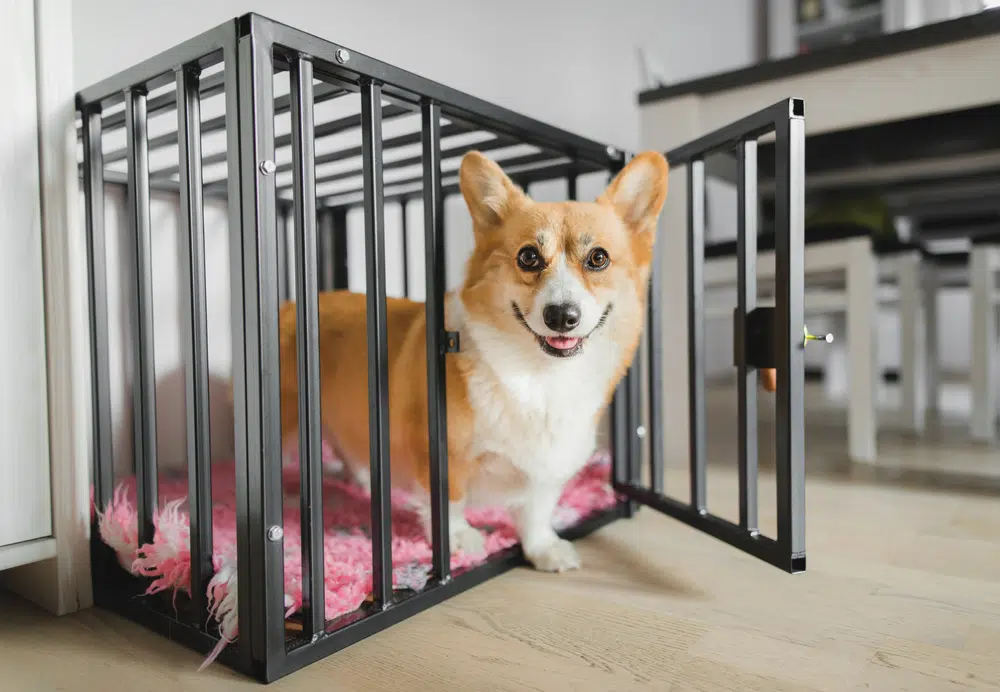
Puppy Potty Training Crate
Potty training is more than just a routine; it’s an art that requires understanding, patience, and adaptability. As you progress in your house training journey, you’ll encounter new challenges and scenarios. Let’s delve into some advanced tips to navigate these waters.
Crate Training in Depth
Crate training taps into a dog’s instinct for a den-like space, offering them a sense of security.
- The Philosophy Behind It: Dogs, by nature, seek a haven. A crate, when introduced correctly, mimics this haven, making them feel secure and comfortable.
- Choosing the Right Crate: It’s not just about size, but also material and placement. The crate should be a sanctuary, not a prison. Ensure it’s spacious enough for them to move but cozy enough to feel snug.
- Introducing Your Puppy to the Crate: Gradual introduction is key. Use positive reinforcements like treats or toys, ensuring the crate is associated with pleasant experiences.
- Duration: Puppies shouldn’t be crated for extended periods. Regular breaks are essential for their physical and mental well-being.Read out in depth guide to Crate Training a Puppy
Dietary Considerations
What your puppy eats directly impacts their potty habits.
- Impact on Potty Training: High-quality food can lead to more predictable elimination habits, making the training process smoother.
- Choosing the Right Food: Nutrition is paramount. Opt for age-appropriate, high-quality food that supports digestion and overall health.
- Monitoring Water Intake: While hydration is crucial, it’s wise to limit water intake before bedtime to reduce nighttime outings.Read More about the Best Dog Foods for Puppies
Potential Challenges and Solutions
Every puppy is unique, and so are the challenges they might present.
- Regression: It’s not uncommon for puppies to revert to old habits. Consistency in response and routine can help them get back on track.
- Medical Concerns: Frequent accidents might indicate underlying health issues. Always consult a veterinarian if you notice irregular elimination habits or any signs of distress.
- Adapting to New Environments: Moving homes or traveling can disrupt a puppy’s routine. Maintaining as much consistency as possible can help them adapt faster.
Socialization and Potty Training
Social interactions are vital for a puppy’s development but can sometimes disrupt their potty routine.
- Introducing New People and Pets: New faces and furry friends can excite a puppy, leading to unexpected accidents. Preemptive potty breaks before social sessions can help.
- Public Spaces: Training your puppy to adapt to unfamiliar terrains is crucial. Always be equipped with cleaning supplies and be respectful of public areas.
Incorporating these advanced tips into your pups’ training regimen can ensure a well-rounded, adaptable, and happy puppy. The journey might be long, but the rewards of a well-trained companion are worth every effort.
Read out Puppy Socialization Checklist
Maintaining Progress and Building on Success
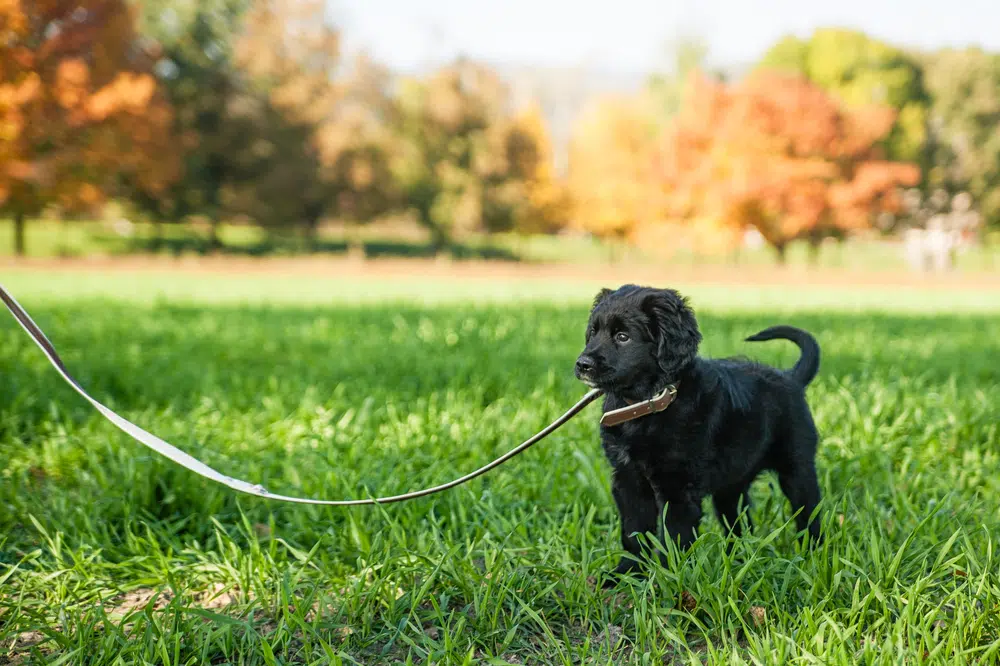
Puppy Potty Training Crate
Successfully navigating the initial stages of potty training is commendable, but the journey doesn’t end there. It’s a continuous process of reinforcement, celebration, and adaptation.
Celebrating Milestones
Every step forward in your puppy’s potty training journey deserves acknowledgment.
- Acknowledging Progress: Every accident-free day is a victory. Celebrate these small yet significant milestones to keep both you and your puppy motivated.
- Creating a Progress Chart: A visual representation, like a chart or calendar marking successful potty breaks, can be a fun and encouraging way to track progress.
- Reward Systems: Introduce a system where your puppy earns points for successful potty outings. These points can later be exchanged for their favorite treats or toys.
Consistency is Key
Maintaining a steady routine is the backbone of sustained potty training success.
- Routine Adherence: Consistency breeds habit. Even after achieving initial success, sticking to the established routine ensures lasting results.
- Reinforcing Positive Behavior: Continual positive reinforcement reinforces the desired behaviors, ensuring your puppy remains on the right track.
- Adapting the Routine: As puppies grow, their needs evolve. Regularly assess and tweak the routine to cater to their changing requirements.
Handling Setbacks
Setbacks are natural and provide opportunities for reassessment and growth.
- Understanding the Cause: Instead of expressing frustration, delve into the root cause of the accident. It could stem from changes in the environment, diet, or even underlying health issues.
- Revisiting Training Techniques: If you encounter setbacks, it might be beneficial to revisit and reinforce certain training aspects.
- Seeking Professional Help: Persistent issues might require expert intervention. Don’t hesitate to consult a professional dog trainer or behaviorist if needed.
Continuous Learning and Adaptation
The world of dog training is dynamic, with new methodologies emerging regularly.
- Stay Updated: To provide the best for your puppy, it’s essential to stay abreast of the latest in dog training research and techniques.
- Joining Puppy Training Groups: Engaging with a community of puppy owners can offer invaluable insights, shared experiences, and innovative training tips.
- Feedback Loop: Regular introspection is crucial. Assess the effectiveness of your training methods, adapt based on feedback, and always strive for improvement.
Conclusion of Puppy Potty Training Crate
Potty training is a pivotal chapter in the early life of every puppy and their owner. It’s a journey of patience, understanding, and consistent effort. While the path might be sprinkled with challenges, the rewards of a well-trained companion are immeasurable.
By embracing the principles of routine, positive reinforcement, adaptability, and continuous learning, owners can foster a bond of trust and understanding with their furry friends. Remember, every puppy is unique, and what works for one might not work for another.
The key is to stay informed, be observant, and always approach the process with love and patience. In the end, the shared experiences and memories created during this journey will only deepen the bond between you and your puppy, making every effort truly worth it.
Interesting Reads:
Crate Training a Puppy at Night: A Guide for Peaceful Sleep

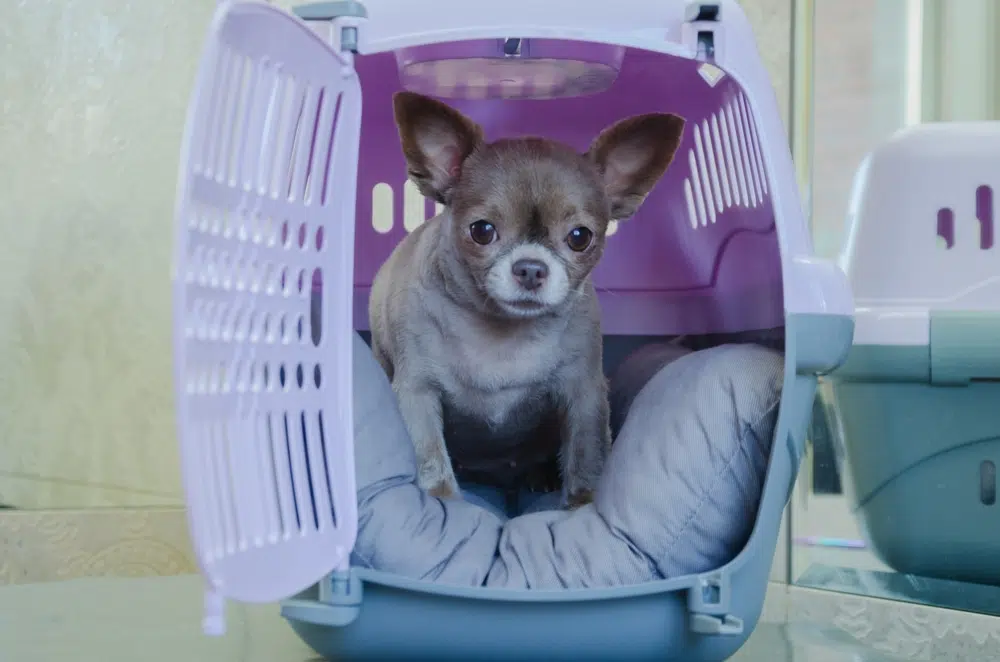

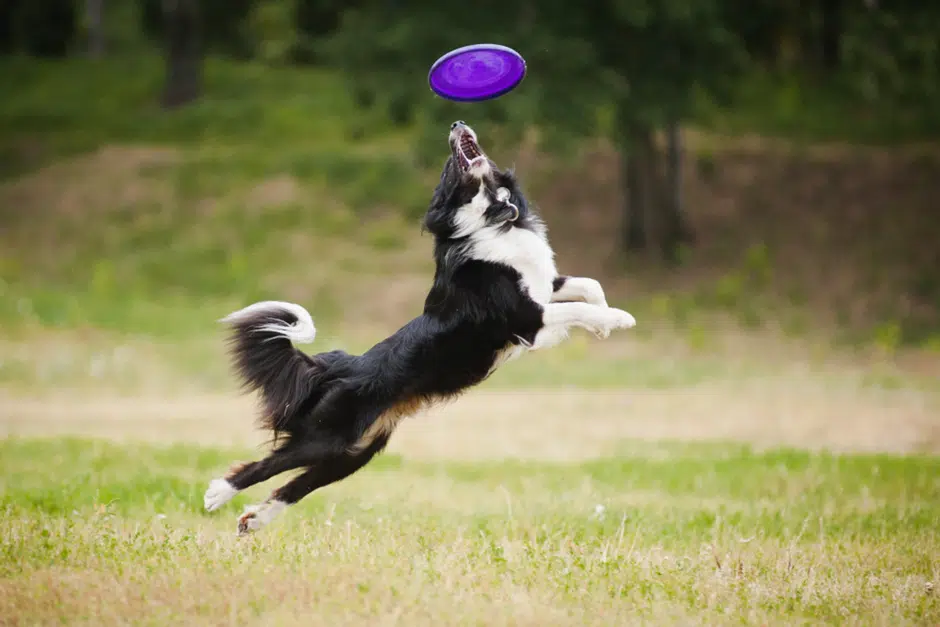
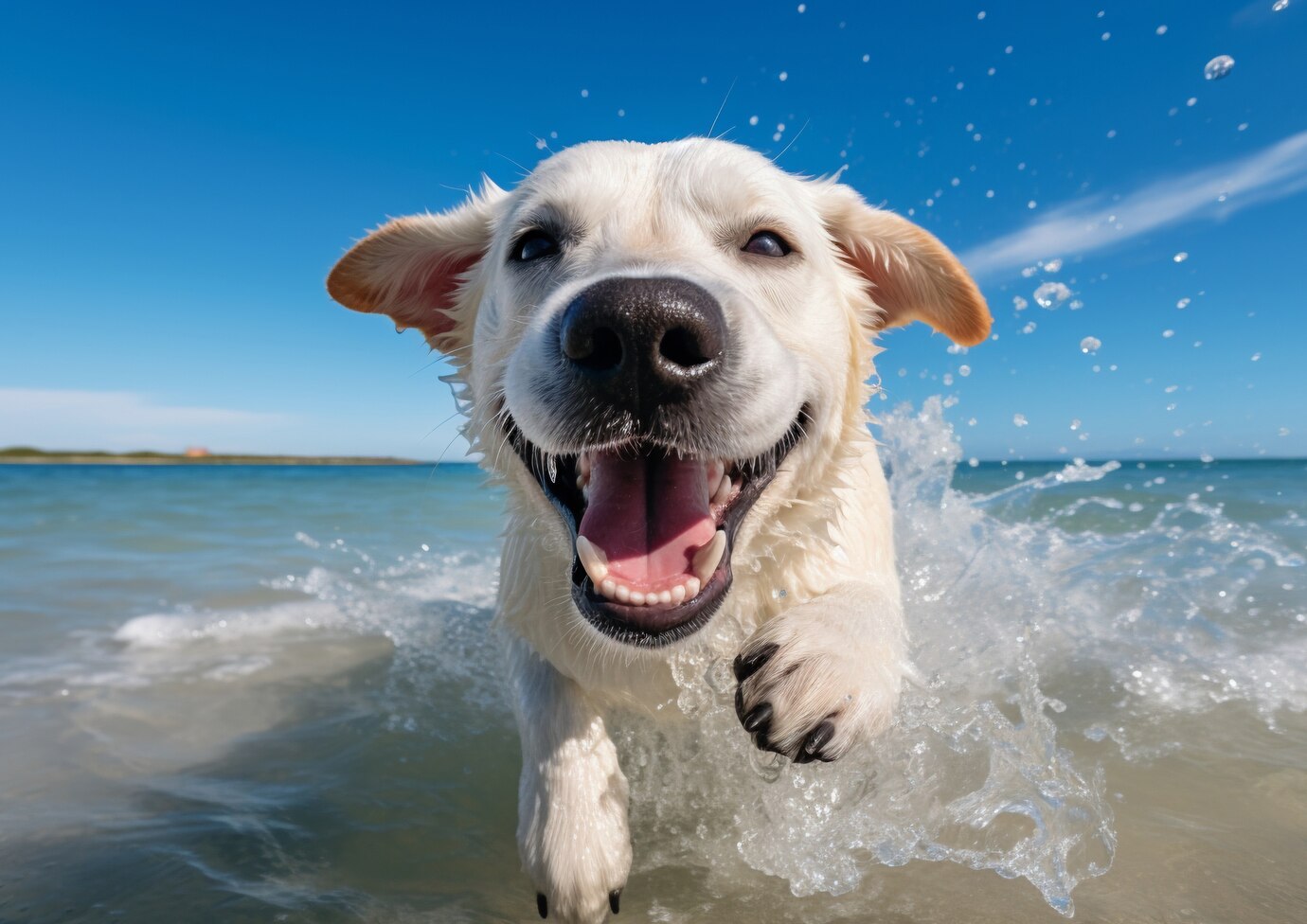
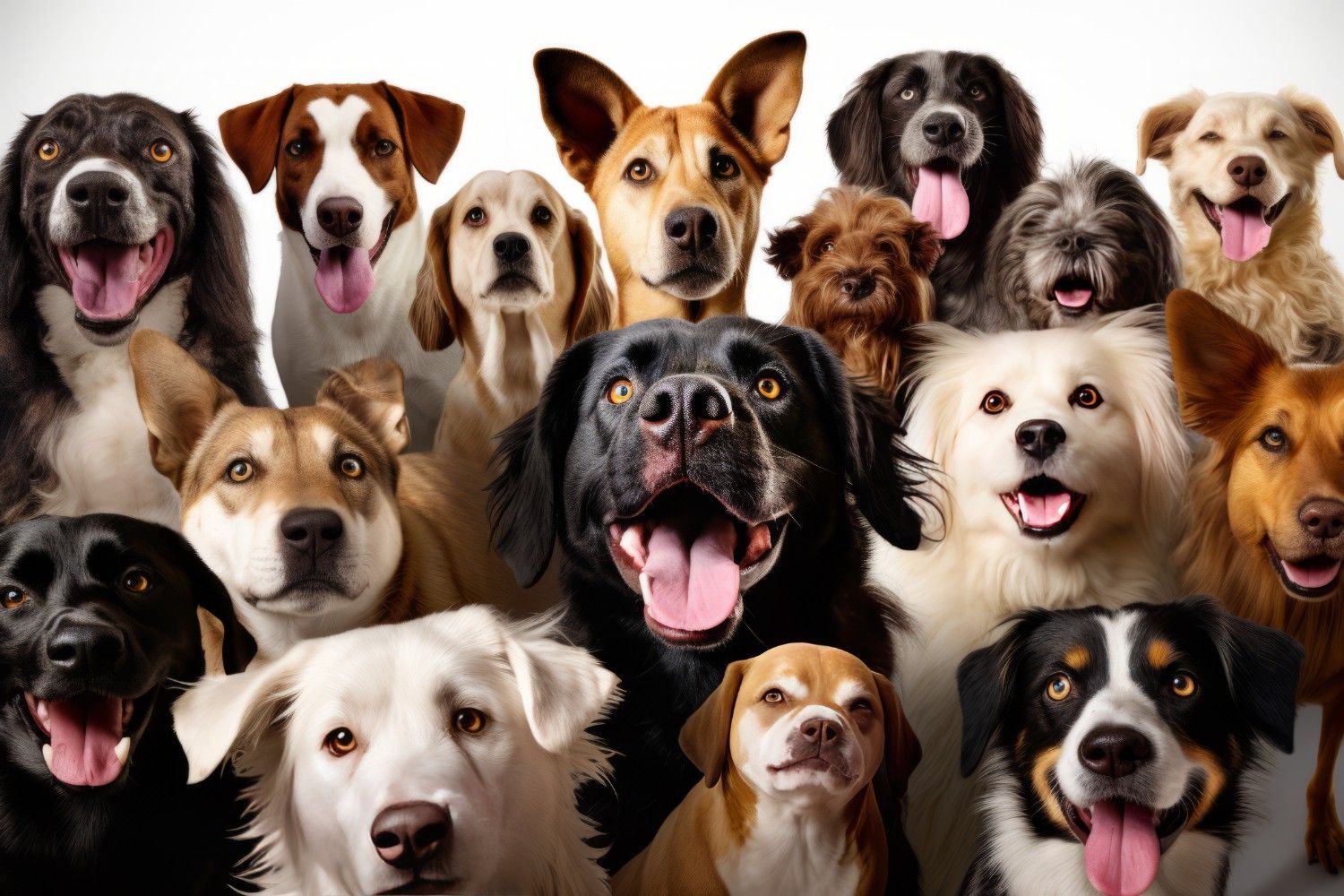


Get involved!
Comments